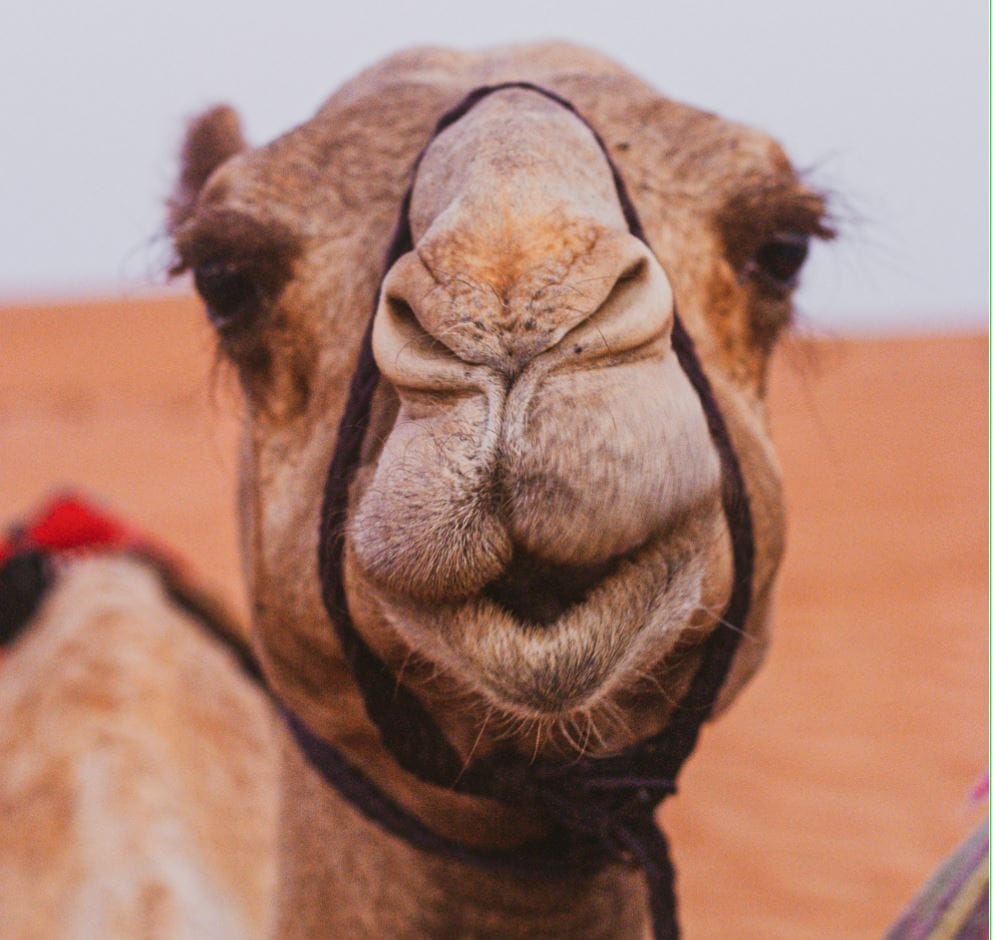Beauties of the Desert

Recently I visited Saudi Arabia and although many of us find camels quite cute, in the Middle East and Arabia not only are camels associated with a long tradition of history and culture, these days they take part in beauty pageants!
Bedouin peoples who still live in the deserts of Arabia continue to depend on camels as a source of food, transportation and clothing. Historically, domestic camels were used by Arabian armies to quickly conquer territory and establish large empires thanks to the speed and resilience of these ships of the desert.

Festivals are held throughout the region to celebrate these qualities and the single-humped dromedary’s symbolic place in Arabian identity. The annual King Abdulaziz Camel Festival attracts thousands of visitors to Arabia’s most unique competition — the Camel Beauty Pageant.
Considered one of the biggest events of its kind in the Middle East, can you believe this high-profile spectacle, now managed under the supervision of Saudi Arabia’s Crown Prince Mohammed bin Salman, is made up of 75 camel competitions, with participants vying for prizes of up to $US26 million.1
Did you have any idea rare-camel breeding is a multimillion-dollar industry? Australia's camels are disease-free and often exported as breeding stock for Arab camel racing stables.
The video below is one of the daily news reports during the festival - in just a few minutes gain an insight into some elements and check out some beautiful camels!
The festival is held at a showground north of Riyadh, (the capital of Saudi Arabia). I took the photo below on my iPhone, flying out of Riyadh - to my surprise the location was recorded as Camel Race Course.

Camels are not usually the first animals that spring to mind when one contemplates beauty, so I wondered how does a camel become a model in a beauty pageant?
Breeders can either opt to enter a single camel or a herd of up to 50 in the contest. Candidates are then divided into categories based on their color — mijahim (dark skinned) and maghateer (light skinned). These lighter-skinned camels are then further subdivided into wodh (bright white), sheal (yellow), sofor (yellow with black humps), shiggih (white but less bright), and homor (red).2
Entrants are categorised by age, with competitions for degh (camels under the age of five) and jel (over the age of five). A separate category is reserved for sawahil, or coastal, camels, distinguished by their red coloring, large heads, long necks, large bodies, and greater overall body length.2
Gosh it’s complicated isn’t it?
Then there are purebred asayel camels, which are known for their speed, usually used in racing competitions. The most famous are the Omani, divided into asayel, hybrid (mehajjin), Al-Seairyat and Al-Awarik.2



Photos: Unsplash - Mads Severinsen, Jyotirmoy Gupta, أخٌفيالله.
I wondered what exactly does a pageant judge look for while assessing the beauty of a camel?
Attributes include having longer lips and the nose high and curved. Beauty increases where camels have a longer beard and broader cheeks. Other features, include the size, shape and composure of their ears, tails and toes.2
The camel's neck is also a key determinant of its beauty, with judges preferring long necks set forward, proportioned with the rest of the body. The positioning of the camel's hump though, is considered among the most important gauges of its beauty, judges prefer the hump to slope backwards. And so the list goes on.2
The beauty regime of the camels is similar to a world class fashion model - washed, shaved, combed and styled to ensure they look their best. Even hairspray. Thankfully these days organizers have in recent years cracked down on more invasive cosmetic enhancements, such as Botox.2
Camel herders use intonations in their voices training their camels to recognize the difference between right and left, to open their mouths when asked, and to kneel.
The ancient form of camel whispering is known as Alheda'a, recently inscribed on UNESCO's list of intangible cultural heritage, highlighting the deep traditional connection between camels and inhabitants of the Arabian Peninsula.3
Handed down within families and communities, a skilled camel herder can use his voice alone to soothe an animal, even signal a change in direction as they trudge together through the desert sands. The camels know the tone of their owner's voice and if someone else calls them, they will not respond to him.3
This short video provides a demonstration.
Shortly I will be sharing some of my experiences exploring the fascinating Kingdom of Saudi Arabia.
Credits:
1. visitsaudi.com
2. www.dailysabah.com/life/camel-whisperers-saudi-herders-use-special-language-for-training/news
3. ich.unesco.org
